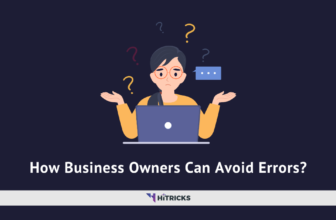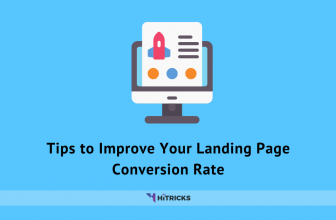All About Data Annotation and Why Does it Matter
This is a detailed guide on data annotation and why does it matter? This may help you understand the concept of data annotation for your project if you are starting to write code yourself – or, even better, if you are just about to sign off on someone else’s work that they have produced in front of you.
There will be no math in this article, but there might be some computer science jargon. Here’s an overview:
What is Data Annotation?
Data annotation is a highly effective process in enhancing the value of information in textual form (i.e., not an image or video). Though it may seem counterintuitive at first, the reason for this is that the most helpful information in any given dataset is contained in the vast amounts of text surrounding it.
Thus, if you think about annotating your data and marking up your information with essential details, it becomes easier to understand how this process can be helpful.
Data annotation is all about adding meaningful labels and tags on top of pre-existing bits of textual content, making it possible for computers to understand better what they are processing.
This means that annotations can reveal specific details at both a micro-level (i.e., single words or phrases) and a macro level (i.e., whole sentences), potentially allowing for either more efficient automatic search procedures or even entirely novel ways of combining multiple datasets without needing human input each time – think “big data” analysis.
Why Does it Matter?
The benefits of data annotation can be summarized into four categories:
Understanding the Data:
One of the critical advantages of annotating your data is that it suddenly becomes much easier to understand what it contains.
With annotations in place, you can quickly scan through text content and locate specific details that may be relevant to your research question or interests. Without this level of organization, finding anything of use would be an incredibly time-consuming process.
Enhancing the Data:
Annotations can also help improve the quality of your datasets by making it easier for you to add additional details later on. Further information can be included via text if need be. Still, another option would be to take advantage of image, video, or audio annotations to produce supplemental pieces of content that are useful in their own right.
Facilitating Research:
By freeing up your team’s time manually annotating data, you will make more time available for other essential tasks (like testing your annotation process).
Additionally, because there is likely only a finite number of people capable of annotating textual data well, having an organized system like this puts you at an advantage over the competition when looking for potential employees.
The better annotated your dataset is compared to others within your industry, the more likely you will have an edge in hiring the best talent around.
Supporting Decision-making:
Data that has been annotated is much easier for humans to digest and process (think about how many times you’ve skimmed through a document looking for some critical piece of information).
This is especially valuable when working on large datasets with multiple people. Taking away some of this cognitive load can make what would typically be a tedious project seem like far less work than it is.
Types of Data Annotation:
There are (roughly) seven types of annotations. It’s important to point out that while these methods may share some similarities, they are pretty different in terms of what they involve.
Semantic Annotation:
One of the great things about this annotation type is that non-experts can easily do it. Anyone with even the most basic understanding of how language works should annotate their text using specific definitions or categories (which is not necessarily valid for intent annotations).
Adding more specific details also opens up a lot more opportunities for reuse. If you know what something means, you can use it in multiple ways.
Image Annotation:
Each object in a given picture gets an accompanying label with image annotation. This could describe physical characteristics (e.g., “blue and red umbrella”) or high-level concepts (e.g., “tools” or “primary colors”). Other valuable data might include the object’s location in the picture or how long it is visible.
One thing to keep in mind is that images can be ambiguous, so extra care needs to be taken when assigning specific labels. The goal should always be to ensure that the annotation is as accurate as possible and that subsequent users will understand it without too much trouble.
Video Annotation:
Like image annotation, video annotation involves attaching specific labels to particular objects or actions. However, there are a few key differences that need to be taken into account:
- Videos are typically much longer than images, meaning that you’ll likely have to come up with more detailed annotations if you want to avoid getting overwhelmed.
- There are many more potential actions within a given video, making it trickier to keep track of everything.
- Since there is sound involved, you’ll have to make sure that your labels can be understood by deaf or hard of hearing users and those who don’t speak the same language as the person doing the annotation.
In terms of what types of things need to be annotated, most experts suggest starting with four main categories:
- Who/what appears in each frame?
- What action(s) do they take?
- Where does this occur (geolocation information)?
- What words and phrases appear on screen?
Text Categorization:
Text categorization is dividing up a given body of text into specific categories. This could be done, for example, by identifying all the instances of a particular word or phrase or by sorting documents into predefined groups (e.g., academic papers vs. blog posts).
One of the benefits of this type of annotation is improving search results. If you know what a particular document is about, you can give the user much more accurate results than keywords alone.
Entity Annotation:
Entity annotation goes one step further than text categorization by attaching specific information to individual entities. This might include things like their name, their role within the document, or other pieces of relevant metadata.
For example, suppose you were annotating a document about the Avengers movie. In that case, you might create an entity annotation called “Avengers” that has the value “The team of superheroes from the Marvel Cinematic Universe.” This would allow anyone searching for that particular item to find your document out of all the others that mention it.
Intent Extraction:
An intent annotation is essentially a combination of text categorization and entity recognition. This means identifying any information in a given body of text that will help understand what its author intended to do (or accomplish).
For example, let’s say you receive an email with this sentence: “When should we get together?”
An obvious interpretation is that the sender wants to organize a time for you two to meet up in person. However, it could also be taken as an invitation for you to contact them online via social media or another chat app.
Since intent annotations are highly context-specific, they can be challenging to create.
Phrase Chunking:
Phrase chunking involves looking at quotation marks, parentheses, brackets, etc., and guess what type of information is referenced there. This makes it very useful for applications with lots of dialogue (e.g., comics), but it can also help with related tasks like summarizing press releases or transcribing interviews.
The main thing that sets phrase chunking apart from other annotation types is that the chunks don’t necessarily have to be related to each other. In other words, you could annotate a sentence like “I’m John” and “John is my name” as two separate chunks, even though they’re both talking about the same person.
Advantages of Data Annotation:
To get the most out of data annotation, it’s essential to understand why it matters. Here are some advantages of using annotations for your data:
- Annotations make data more accessible and user-friendly. By adding labels and descriptions to data, you can help people understand it regardless of their level of expertise or knowledge.
- Annotations can help with search and retrieval. If you know what type of information a particular document contains, you can provide more accurate search results than just keywords.
- Annotations can improve data quality. By catching errors and inconsistencies, annotations can help keep data clean and accurate.
- Annotations can help with data analysis. By understanding the structure of a dataset, you can perform more detailed and sophisticated analyses.
- Annotations can improve communication. By providing clear and concise data descriptions, annotations can help everyone involved in a project understand it better.
- Annotations can be used for machine learning. By teaching machines how to read and understand data, annotations can help them learn and evolve independently.
- Annotations are a form of documentation. In the same way that software developers use comments to document their code, annotators can use annotations to explain the purpose and rationale behind their work.
- Annotations can help with research. By attaching information about who created a dataset, where it came from, and how it was processed, annotations can help researchers track down and verify data sources.
- Annotations can be used for education. By explaining the basics of a dataset, annotations can help students learn about different data types and analyze them.
- Annotations are a form of metadata. In addition to describing the contents of a dataset, annotations can also provide information about its structure and format.
Conclusion:
As you can see, there are many reasons why a data annotation is an essential tool. With its ability to improve data quality, communication, content moderation, analysis, and more, annotation can be valuable for any project. So the next time you’re working with data, don’t forget to include annotations!
Nirmal Sarkar is a Biotechnologist from the city of Joy, Kolkata. He is the founder of this blog and covers a wide range of topics from Gadgets to Software to Latest Offers. You can get in touch with him via nirmal@hitricks.com







